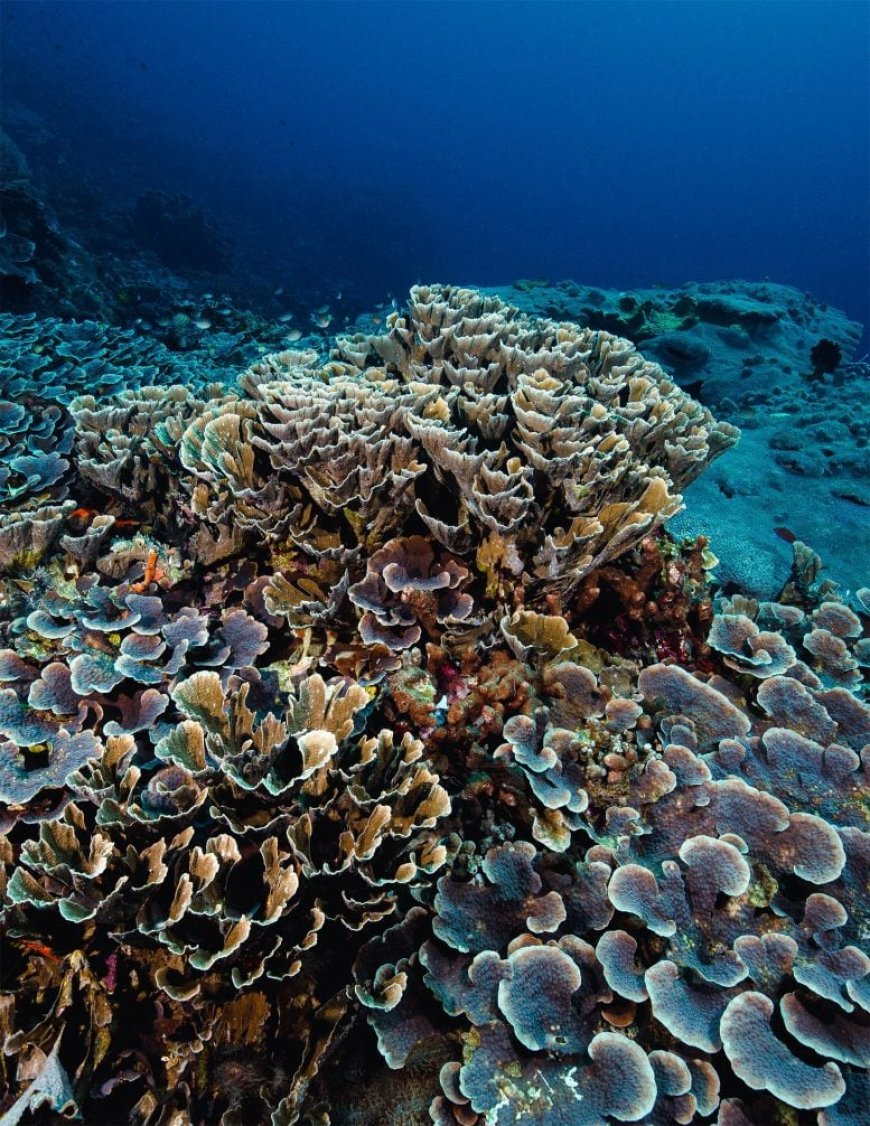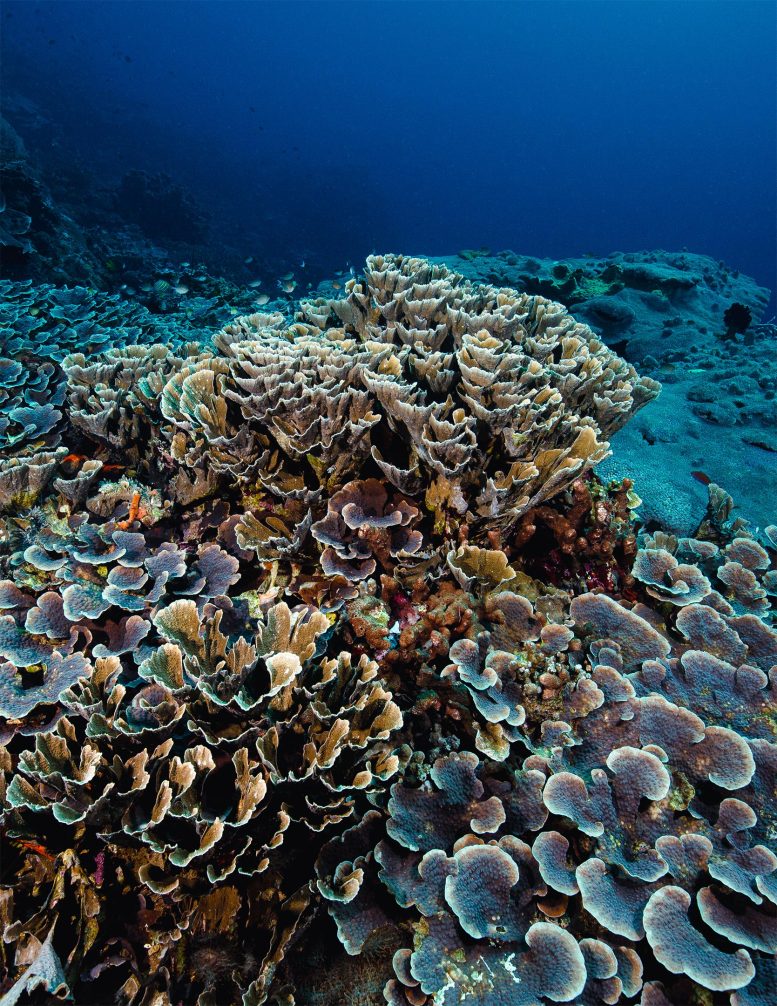Diving Deep Into the Great Barrier Reef’s Hidden Climate Defense
Diving Deep Into the Great Barrier Reef's Hidden Climate Defense SciTechDaily

Researchers Reveal the Impact of Global Warming on the Great Barrier Reef

Coral reefs are fragile ecosystems and become increasingly dominated by lettuce-like and encrusting morphologies at mesophotic depths. Credit: Prof Peter Mumby
Introduction
This report highlights the findings of a study that explores the impact of global warming on the Great Barrier Reef. The study emphasizes the importance of understanding and managing coral reefs in the face of climate change, aligning with the Sustainable Development Goals (SDGs).
Insulation of Deeper Areas from Heatwaves
Recent research reveals that certain deeper areas of the Great Barrier Reef are shielded from harmful heatwaves. However, this protection is at risk if global warming continues, posing a significant threat to the reef’s resilience.
- Background
- Study Findings and Global Implications
- A Warning and a Call to Action
Background
The Great Barrier Reef has experienced mass “bleaching” events due to high surface temperatures, occurring in five out of the last eight years. These events highlight the vulnerability of coral reefs to climate change.
Climate change projections for coral reefs typically focus on sea surface temperatures, overlooking the fact that deeper water may not experience the same level of warming. This study aims to address this knowledge gap by examining the impact of changing temperatures on mesophotic corals (depths of 30-50 meters).
Study Findings and Global Implications
The study reveals that the separation between warm surface water and cooler deeper water can provide insulation for reefs against surface heatwaves. However, this protection will be lost if global warming exceeds 3°C above pre-industrial levels.
While similar patterns could occur on other reefs worldwide, local conditions influencing water movement and mixing will determine the existence and resilience of deeper water coral refuges against surface heatwaves.
A Warning and a Call to Action
The study emphasizes that coral reefs serve as indicators of the broader impact of climate change on species and ecosystems. Coral bleaching is a visible sign of human-induced environmental damage.
The findings offer both hope and a warning. While some reefs demonstrate resilience to current climate change levels, this resilience has its limits. A temperature increase of 3°C would push mesophotic temperatures in the Great Barrier Reef beyond the threshold for coral mortality.
Furthermore, shallow-water species that do not inhabit deeper areas cannot seek refuge in mesophotic reefs as shallow reefs degrade. Therefore, the protection of mesophotic corals is crucial for preserving biodiversity.
Implications for Management and Conservation
To protect coral reefs, a comprehensive understanding of their dynamics is necessary. Reefs face multiple threats, including climate change. By prioritizing the management of threats on reefs that have a higher chance of withstanding climate change impacts, it may be possible to maintain healthy reefs.
The study underscores the need to deepen our knowledge of tropical coral reefs at greater depths. The assumption that depth provides a persistent refuge from rising carbon emissions is not valid.
Conclusion
The study concludes that urgent action is required to mitigate global warming and protect coral reefs. The Sustainable Development Goals (SDGs) provide a framework for addressing climate change and conserving marine ecosystems, including coral reefs.
References
Reference: “Climate change impacts on mesophotic regions of the Great Barrier Reef” by Jennifer K. McWhorter, Paul R. Halloran, George Roff and Peter J. Mumby, 8 April 2024, Proceedings of the National Academy of Sciences.
DOI: 10.1073/pnas.2303336121
SDGs, Targets, and Indicators
-
SDG 13: Climate Action
- Target 13.1: Strengthen resilience and adaptive capacity to climate-related hazards and natural disasters
- Target 13.2: Integrate climate change measures into national policies, strategies, and planning
- Target 13.3: Improve education, awareness-raising, and human and institutional capacity on climate change mitigation, adaptation, impact reduction, and early warning
- Target 13.a: Implement the commitment undertaken by developed-country parties to the United Nations Framework Convention on Climate Change to a goal of mobilizing jointly $100 billion annually by 2020 from all sources to address the needs of developing countries in the context of meaningful mitigation actions and transparency on implementation and fully operationalize the Green Climate Fund through its capitalization as soon as possible
- Target 13.b: Promote mechanisms for raising capacity for effective climate change-related planning and management in least developed countries and small island developing states, including focusing on women, youth, and local and marginalized communities
The article discusses the impact of global warming on coral reefs, specifically the Great Barrier Reef. It highlights the need to understand and manage coral reefs against climate change. This aligns with SDG 13, which focuses on taking urgent action to combat climate change and its impacts.
-
SDG 14: Life Below Water
- Target 14.2: Sustainably manage and protect marine and coastal ecosystems to avoid significant adverse impacts, including by strengthening their resilience and take action for their restoration in order to achieve healthy and productive oceans
- Target 14.5: By 2020, conserve at least 10 percent of coastal and marine areas, consistent with national and international law and based on the best available scientific information
- Target 14.7: By 2030, increase the economic benefits to small island developing states and least developed countries from the sustainable use of marine resources, including through sustainable management of fisheries, aquaculture, and tourism
The article discusses the impact of global warming on coral reefs, which are important marine ecosystems. Protecting and managing these ecosystems aligns with SDG 14, which focuses on conserving and sustainably using the oceans, seas, and marine resources.
Table: SDGs, Targets, and Indicators
| SDGs | Targets | Indicators |
|---|---|---|
| SDG 13: Climate Action | Target 13.1: Strengthen resilience and adaptive capacity to climate-related hazards and natural disasters | Not mentioned in the article |
| Target 13.2: Integrate climate change measures into national policies, strategies, and planning | Not mentioned in the article | |
| Target 13.3: Improve education, awareness-raising, and human and institutional capacity on climate change mitigation, adaptation, impact reduction, and early warning | Not mentioned in the article | |
| Target 13.a: Implement the commitment undertaken by developed-country parties to the United Nations Framework Convention on Climate Change to a goal of mobilizing jointly $100 billion annually by 2020 from all sources to address the needs of developing countries in the context of meaningful mitigation actions and transparency on implementation and fully operationalize the Green Climate Fund through its capitalization as soon as possible | Not mentioned in the article | |
| Target 13.b: Promote mechanisms for raising capacity for effective climate change-related planning and management in least developed countries and small island developing states, including focusing on women, youth, and local and marginalized communities | Not mentioned in the article | |
| SDG 14: Life Below Water | Target 14.2: Sustainably manage and protect marine and coastal ecosystems to avoid significant adverse impacts, including by strengthening their resilience and take action for their restoration in order to achieve healthy and productive oceans | Not mentioned in the article |
| Target 14.5: By 2020, conserve at least 10 percent of coastal and marine areas, consistent with national and international law and based on the best available scientific information | Not mentioned in the article | |
| Target 14.7: By 2030, increase the economic benefits to small island developing states and least developed countries from the sustainable use of marine resources, including through sustainable management of fisheries, aquaculture, and tourism | Not mentioned in the article |
Behold! This splendid article springs forth from the wellspring of knowledge, shaped by a wondrous proprietary AI technology that delved into a vast ocean of data, illuminating the path towards the Sustainable Development Goals. Remember that all rights are reserved by SDG Investors LLC, empowering us to champion progress together.
Source: scitechdaily.com

Join us, as fellow seekers of change, on a transformative journey at https://sdgtalks.ai/welcome, where you can become a member and actively contribute to shaping a brighter future.







